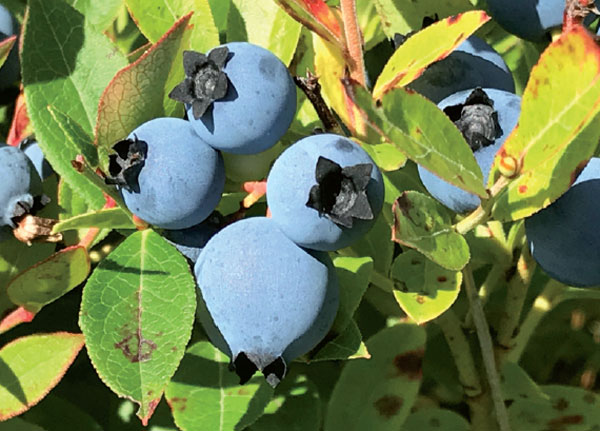Wild blueberries juice up Canada's exports
 |
|
Canadian farmers are fi nding demand for their wild blueberries in China. NA LI/ CHINA DAILY |
Wild blueberries from Atlantic Canada and Quebec are surging in popularity among the world's health-conscious - and adding to Canada's export coffers.
The rising demand for the low-brush blueberries and byproducts - especially from the massive Chinese market - has stimulated development of farms and related businesses and contributed significantly to the economies of five Canadian provinces.
Atlantic Canada includes the provinces of New Brunswick, Nova Scotia and Prince Edward Island, and Newfoundland and Labrador province.
Nova Scotia is the wild blueberry capital of North America. With its favorable oceanic climate and soil, its wild blueberries are managed on a two-year crop rotation cycle, leading to the production of about 60 million pounds each year.
That translates into C$100 million in worldwide sales, mainly to the US, Europe and East Asia.
There are an estimated 1,100 wild blueberry growers in Nova Scotia, many who have passed the farmland and family businesses from generation to generation.
Art Sargent, who runs an old garage, C.E. Sargent & Son Ltd in Parrsboro, owns 850 acres of wild blueberry farms on the outskirts of Halifax. He has tended to the family farm business for decades.
In an interview with China Daily, Sargent introduced his daughter Stephanie as a third-generation hand at running the sprawling family blueberry farm.
"The wild blueberry business has been a great family business for us the last 25 to 30 years, and we hope to get another 50 years out of it," said Sargent. "Nova Scotia is a natural producer of wild blueberries; there is a big market, and it works both ways."
Sargent's parents started the business in 1951. They regularly bought and leveled land, cultivating and expanding as well as pruning crops manually.
"Now harvesting machines have been added to the farm, as nobody wants to tend to it," he said.
Last year, the Sargent family farm exported 1.8 million pounds of wild blueberries. An average of 3,000 to 6,000 pounds per acre could be harvested under the right weather conditions.
"But last year's output of 1.8 million pounds was the largest," he added.
According to Sargent, wild blueberries should get at least an inch of rain per week, and during drier weather, some irrigation.
Sargent believes that the big Chinese market would give the industry a much-needed boost. "We need new markets now, and we hope more and more of our products can be sold to China."
Michel Baril is another second-generation grower, who owns 200 acres of wild blueberry land in St-Felicien, Quebec. Although the berry price has fallen compared to last year's price of 35 cents a pound, Baril and his family would like to spend more time harvesting at night while there is always dew on the crops to ensure their freshness.
"You have to love and have a passion for what you do," Baril said. "We have been in agriculture for a long time, and there's ups and downs, and if you're not passionate about it, (and) you're only in it for the money, that's not going to work. You have to be passionate about getting quality product."
Peter J. Rideout, the executive director of the Wild Blueberry Producers Association of Nova Scotia, said that global demand for Canada's wild blueberries, known for their excellent taste, nutritional value and other health benefits, has increased.
The industry in Nova Scotia encompasses 44,000 acres of naturally grown wild blueberries that could further drive the growth of the crop in the Atlantic region.
"Farmers, producers, manufacturers and officials have been encouraged by the immense economic contribution of this crop," said Rideout, who is also the head of the Wild Blueberry Research Institute at the Dalhousie University. "Our research centre had been set up to encourage cultivators to ensure a reliable and sustainable supply to meet global demand."









